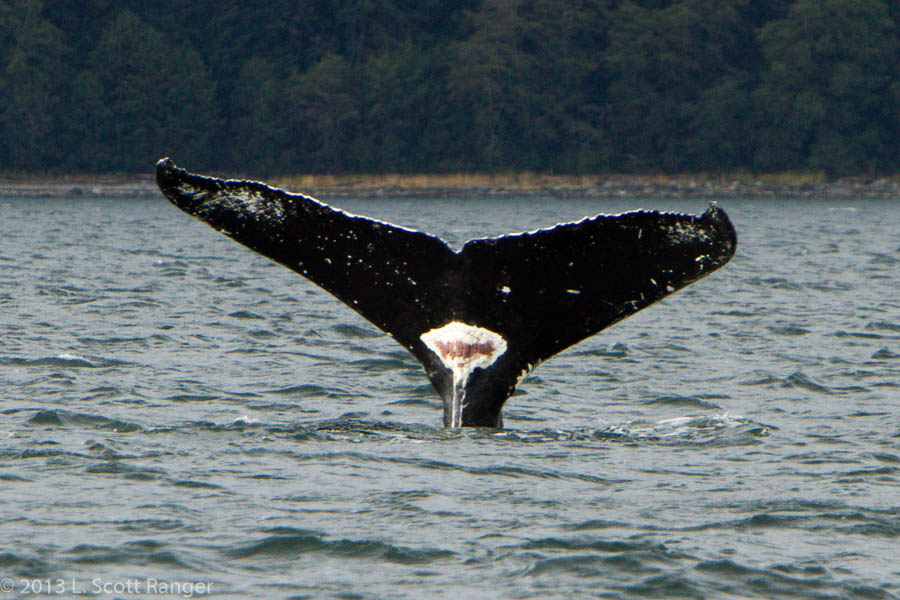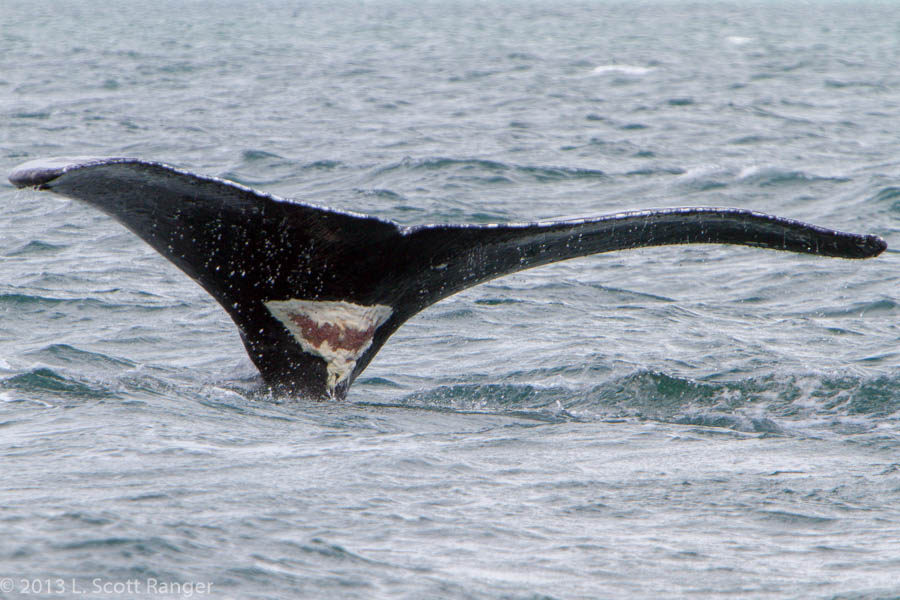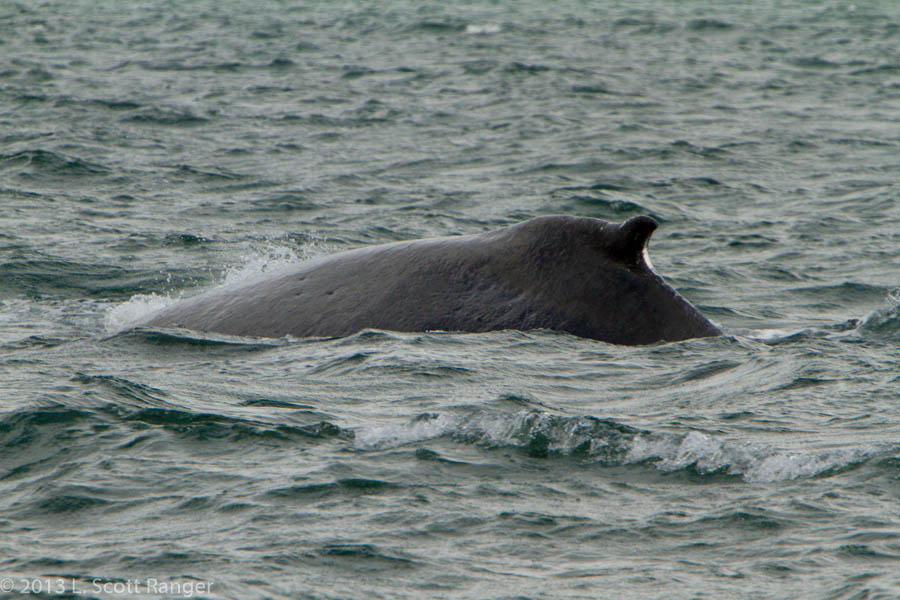924, Crater
There are a few whales out here that are utterly unmistakable, and Crater is one of them. First cataloged in 2006, she's been seen in our Juneau waters for more than two decades with this amazing scar. The scar is so obvious I doubt many even look at the diffused white patches and the spots on her flukes.
|
So just what is this scar? It is very difficult for me to determine from my photographs, but if this one is enlarged (click on it and it will open larger in a new page), it appears that the lesion does not extend very deep into the viscera of Crater's peduncle.
From a distance it has the appearance of a "crater" and this is probably what gives the whale its name. But a close up view shows the reddish material is not "meat" or muscle and that it is a raised up patch of scar tissue just like the white scar tissue surrounding it. Was it stained by being cut deeply when the damage occurred? I have no idea. |
|
While considered by many a "regular" to our waters, I've only spotted this whale once and all 17 of my photos are from this single event. Crater is also thought to spend a good bit of time with "Magma" (whale 2006) and apparently helped inspire that name as magma lies beneath a crater. Magma was nowhere to be seen this day.
Crater has a fairly unique dorsal fin. A largish mound above the vertebral column ends with a small, pointed fin with white highlighting the rear curved surface. |


